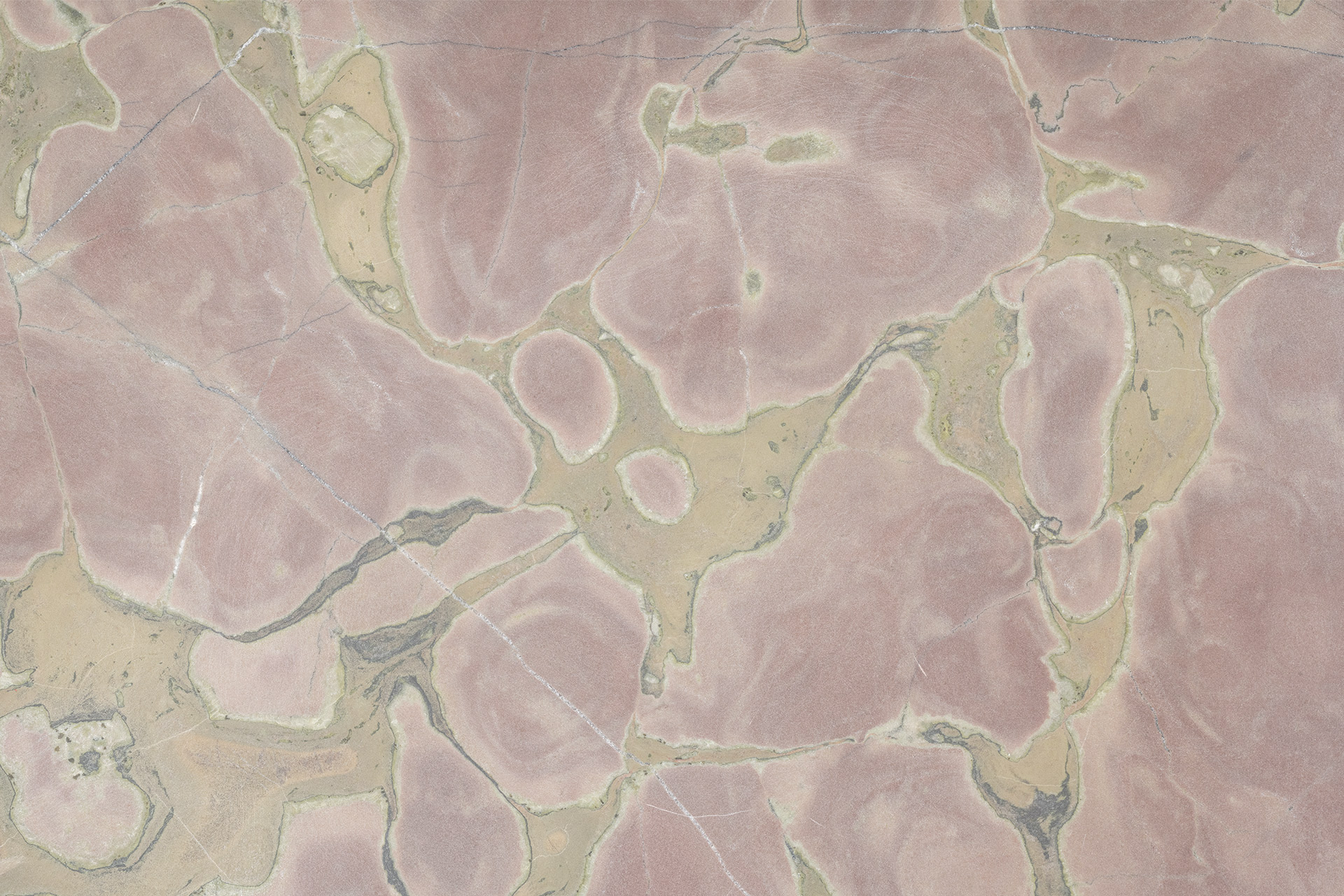

Drawing inspiration from megalithic architecture, Aphanès deploys the simplicity of structural archetypes in order to expose the richness of the material, namely an extremely limited reserve of two kinds of rare marble featuring sophisticated patterns and colours.
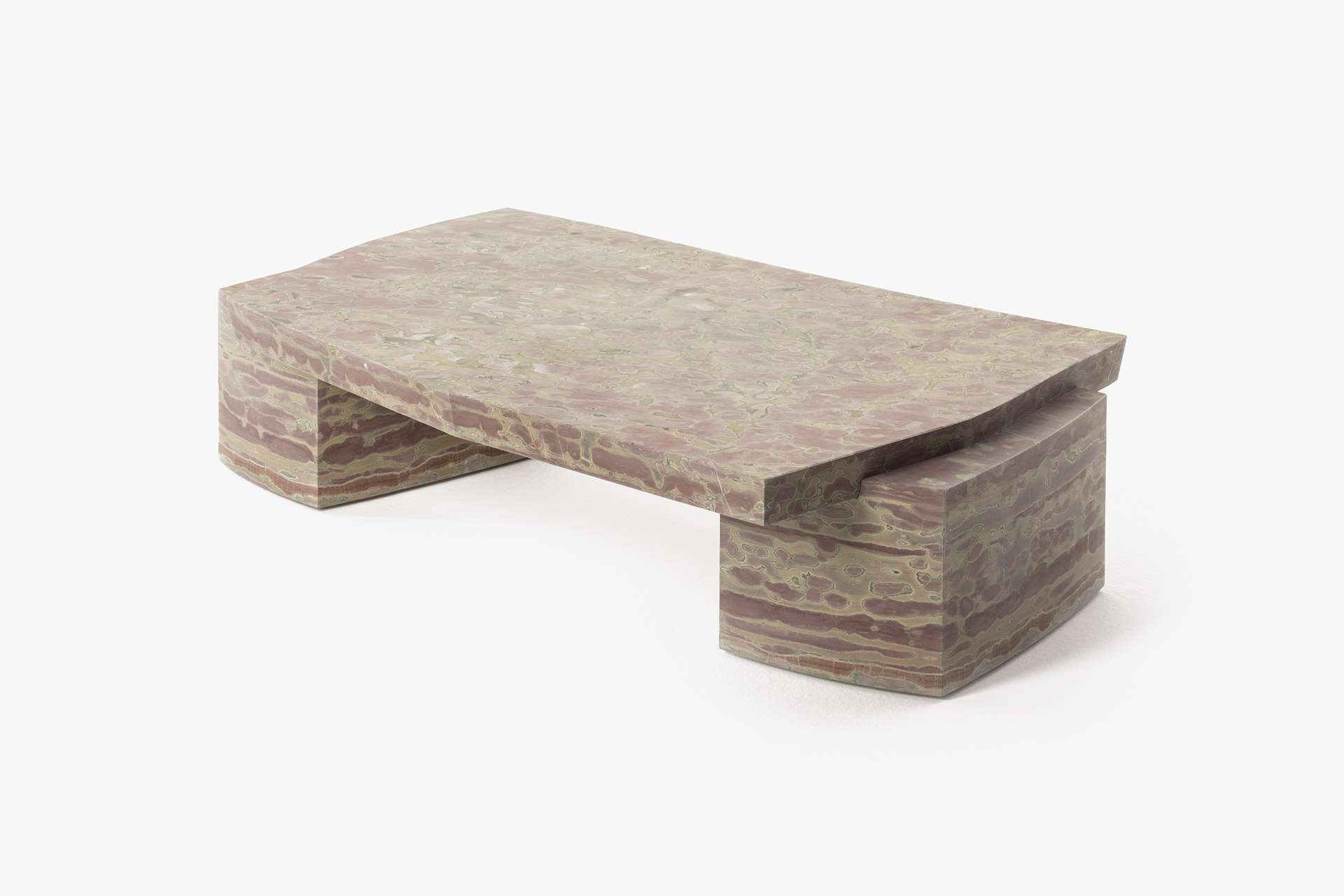
The pieces that form the collection are reminiscent of dolmen (prehistoric stone structures), evoking an aura of ritual and mystery, all the while sparking a visual short circuit, as their minimalist forms contrast the vibrant surface of the marble.
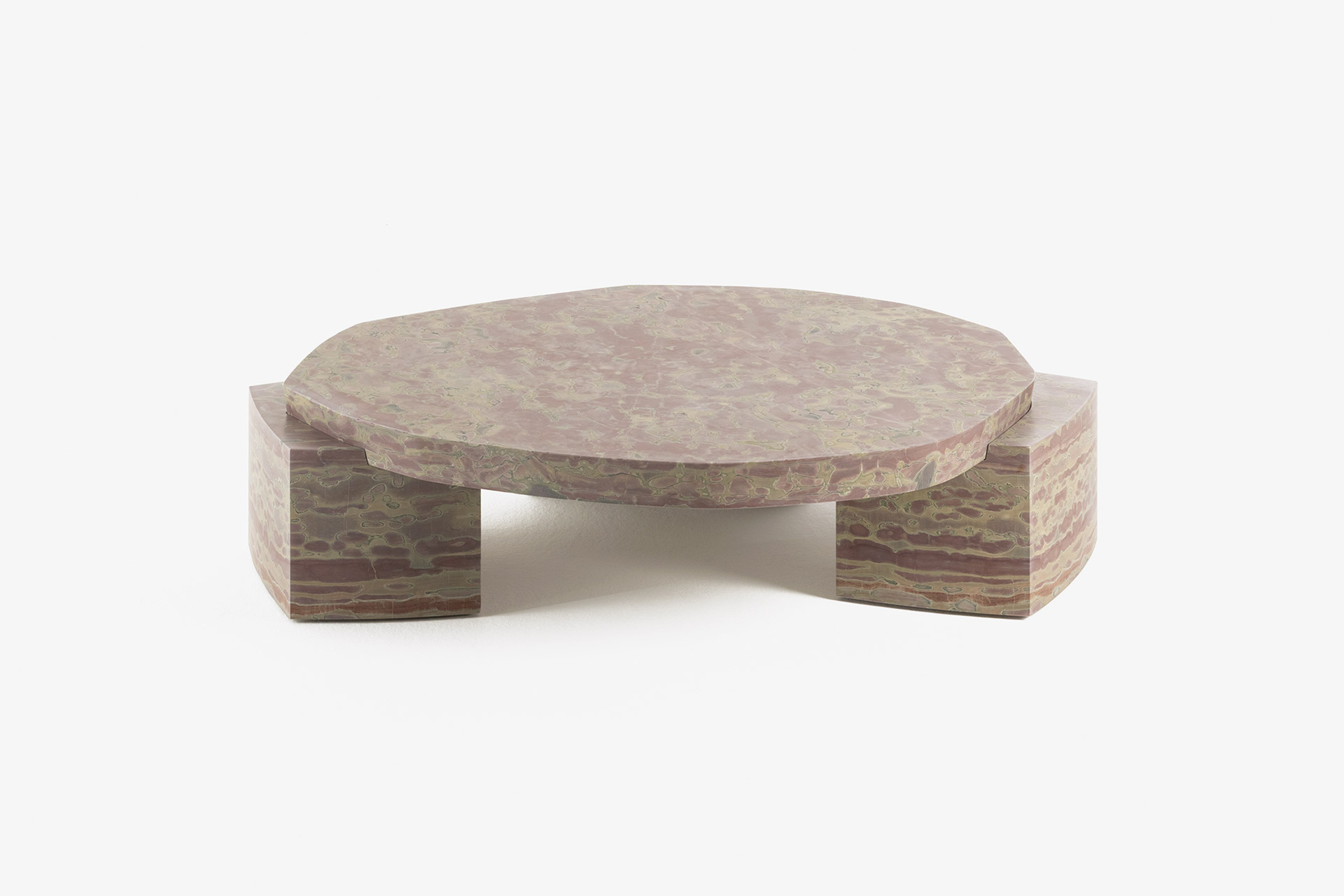
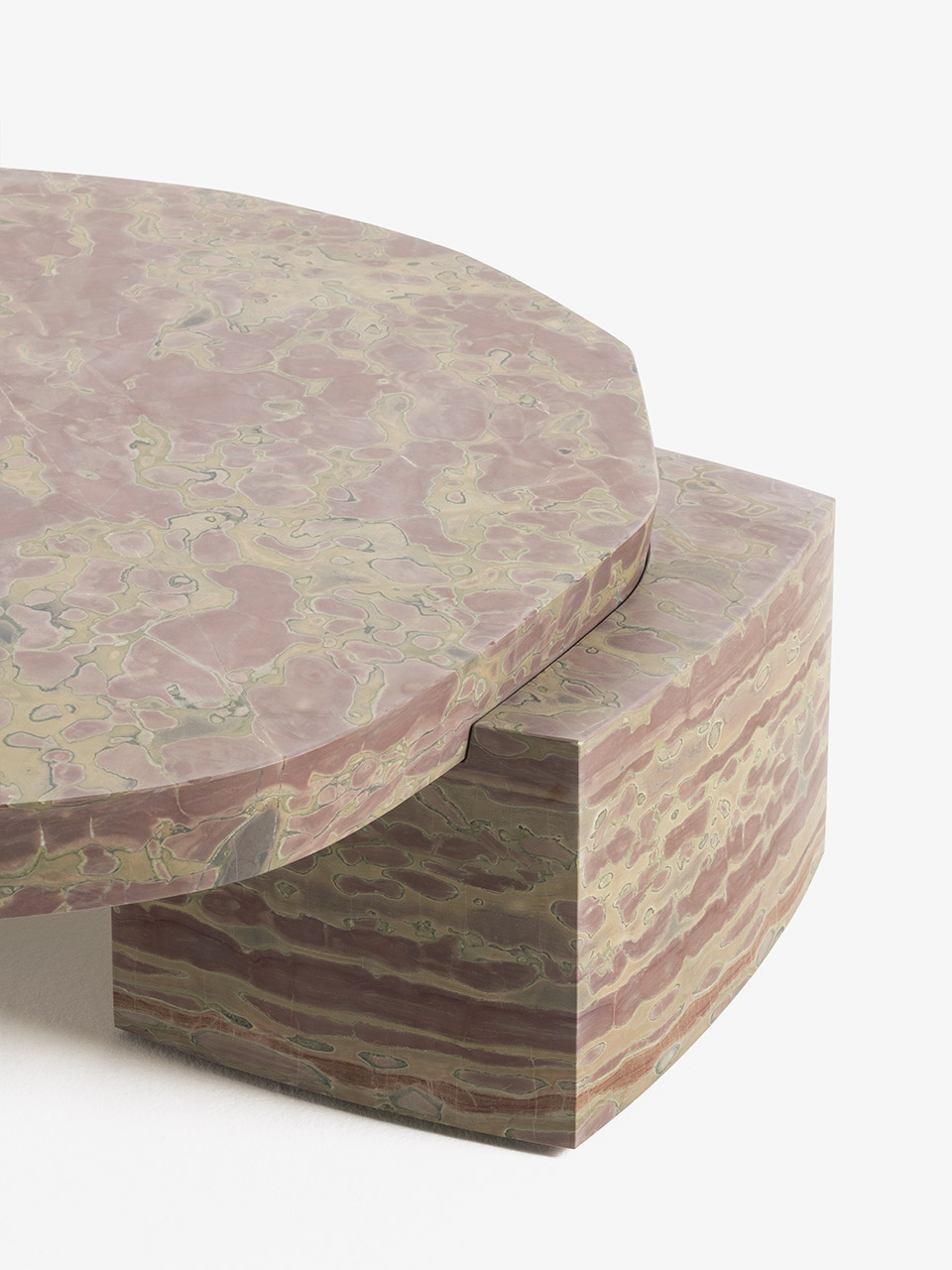
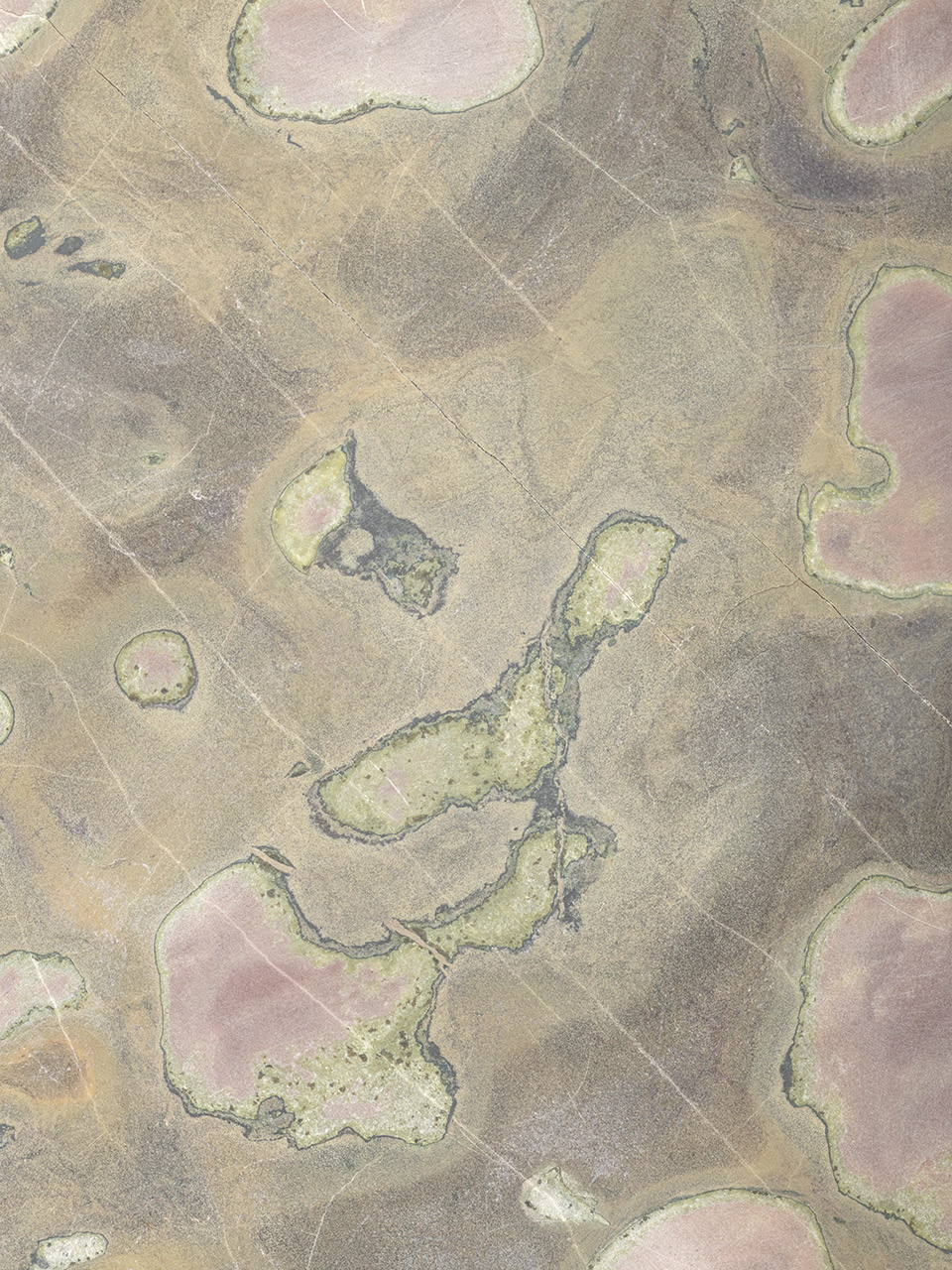
At the heart of the project lies a reverence for the material itself: the two selected stones were extracted decades ago from quarries that are no longer active, without any certain information about their geographical origin. The material’s most prominent feature is of course its extraordinary internal structure that, with the appropriate cutting and finishing, reveals complex patterns and shapes in an arresting kaleidoscope of nuances.
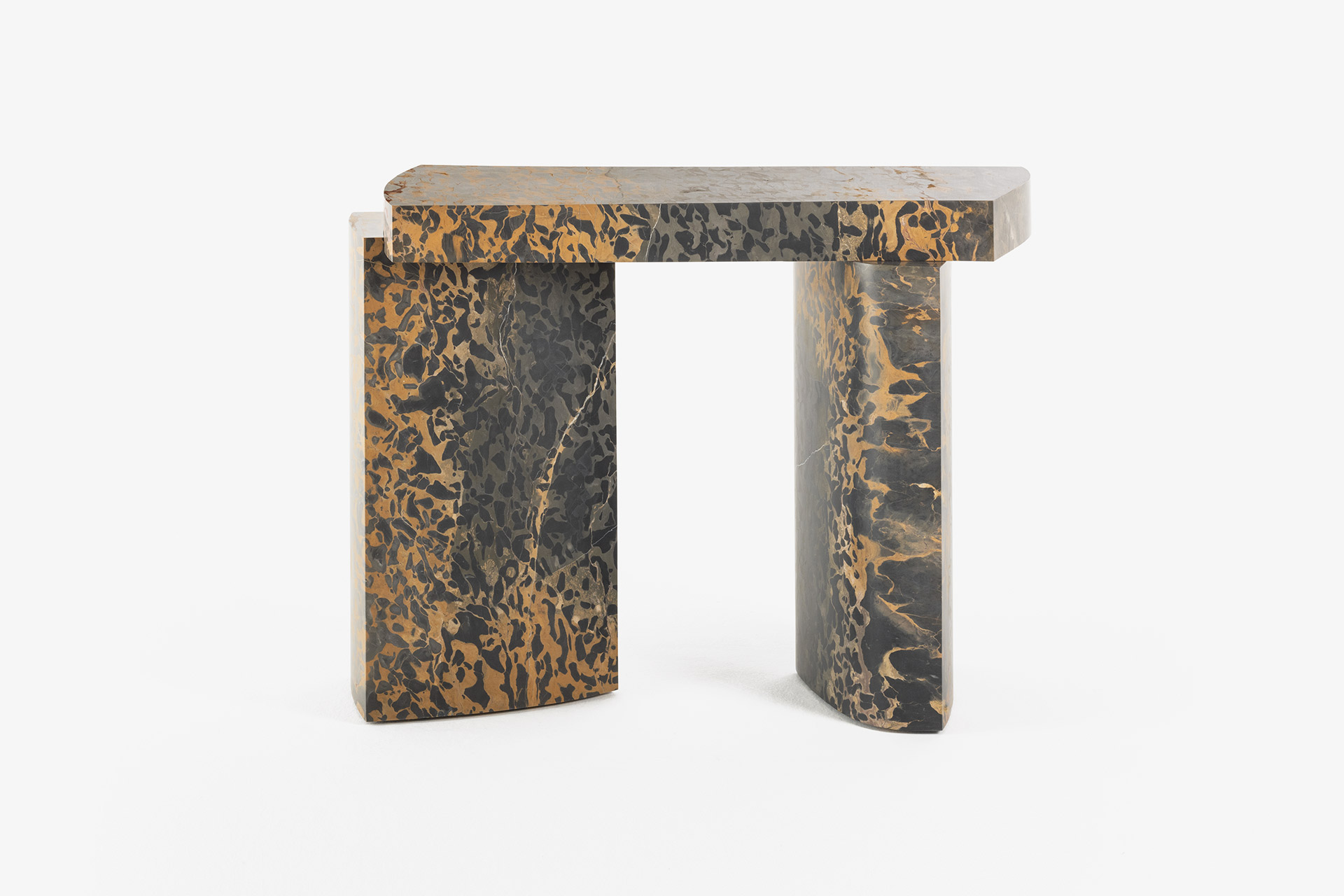
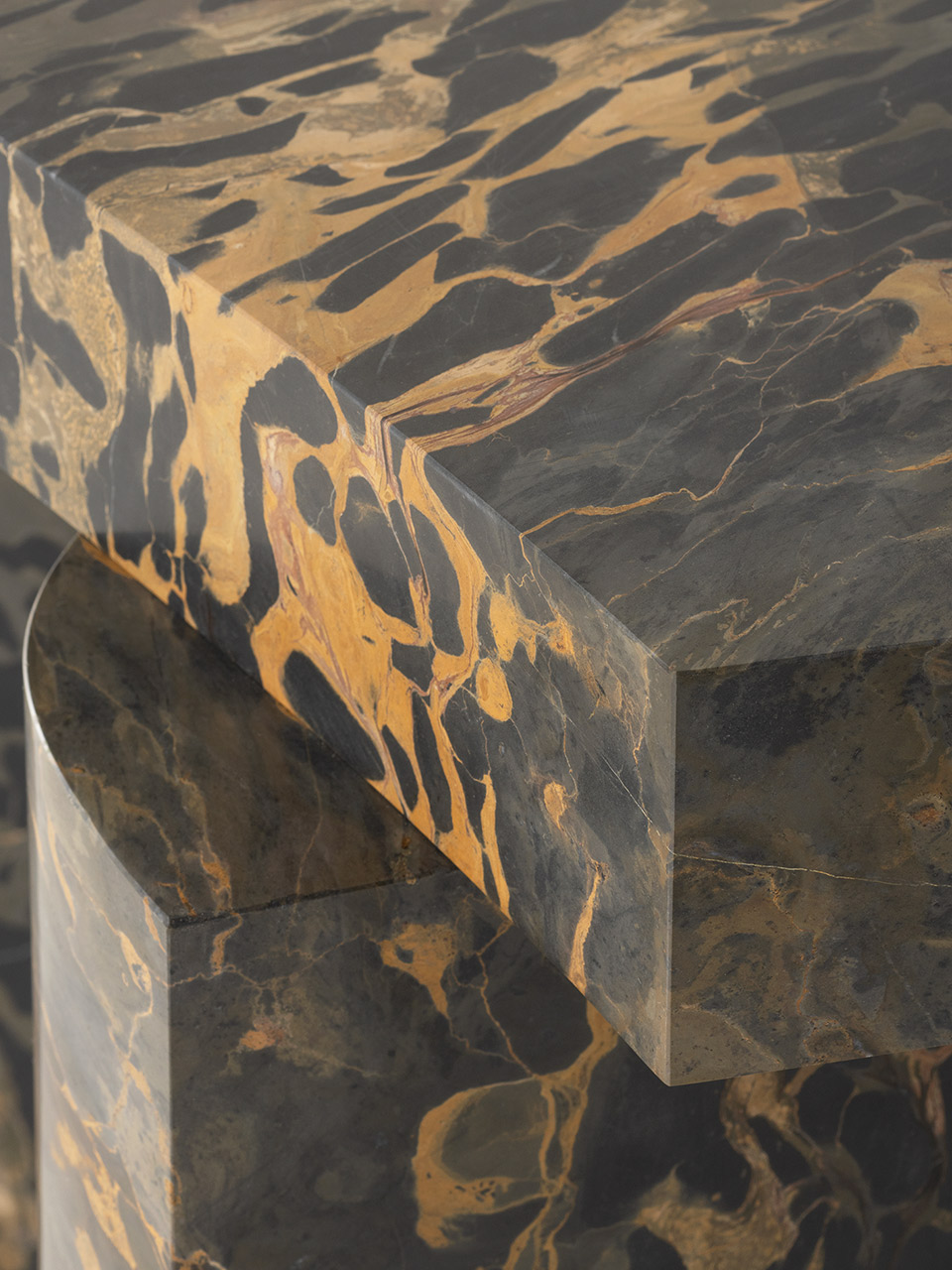
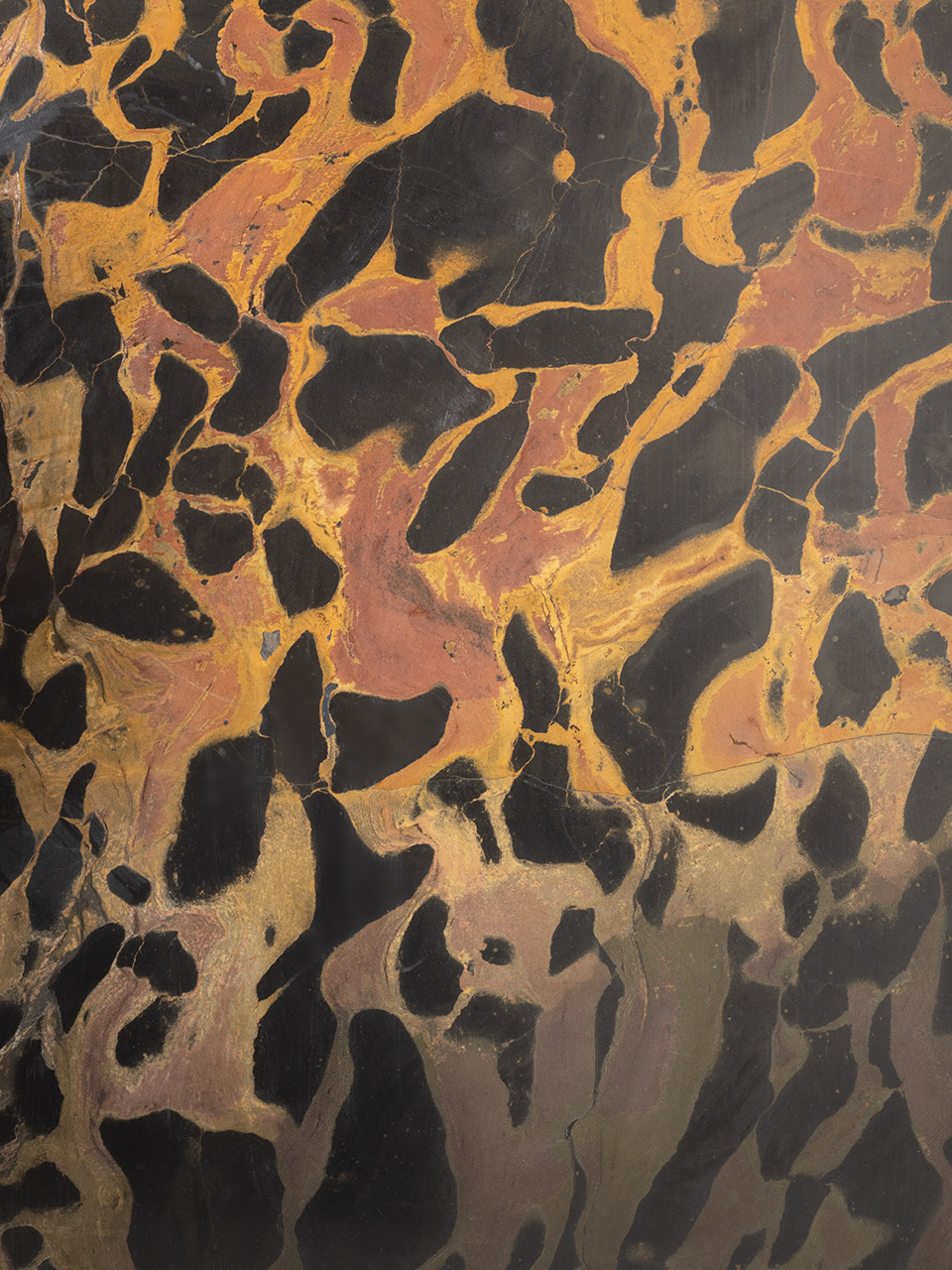
Observing the works, the process of diagenesis that led to the formation of the two marbles becomes immediately visible: a complex of chemical and physical processes that converted sediments into solid rock, through actions of cohesion, compaction, redistribution and recrystallization of substances; in both marbles it is possible to observe instants of this process manifested through variations in color and inclusions, where every detail is considered relevant and therefore indulged in, respecting the long process of formation.
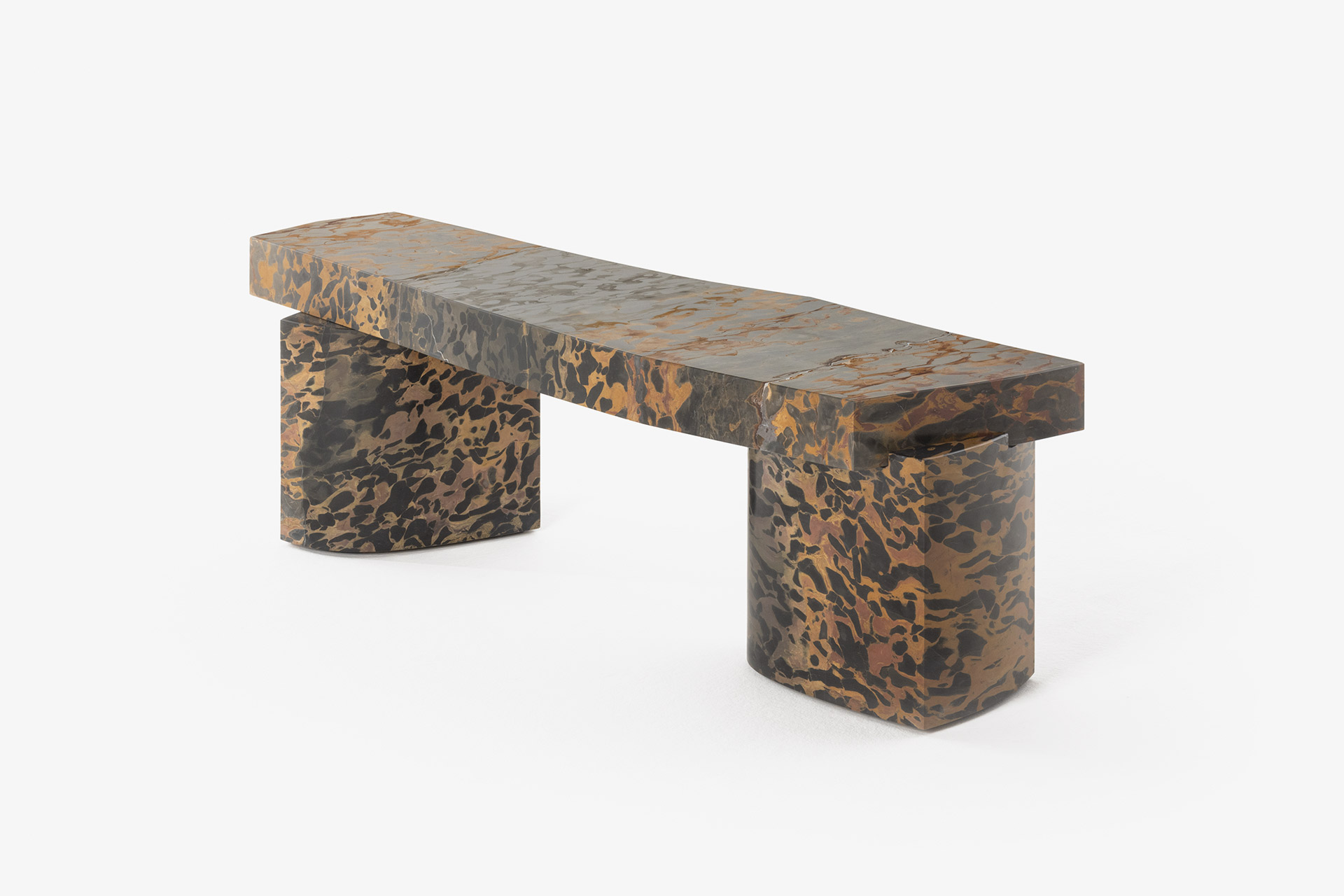
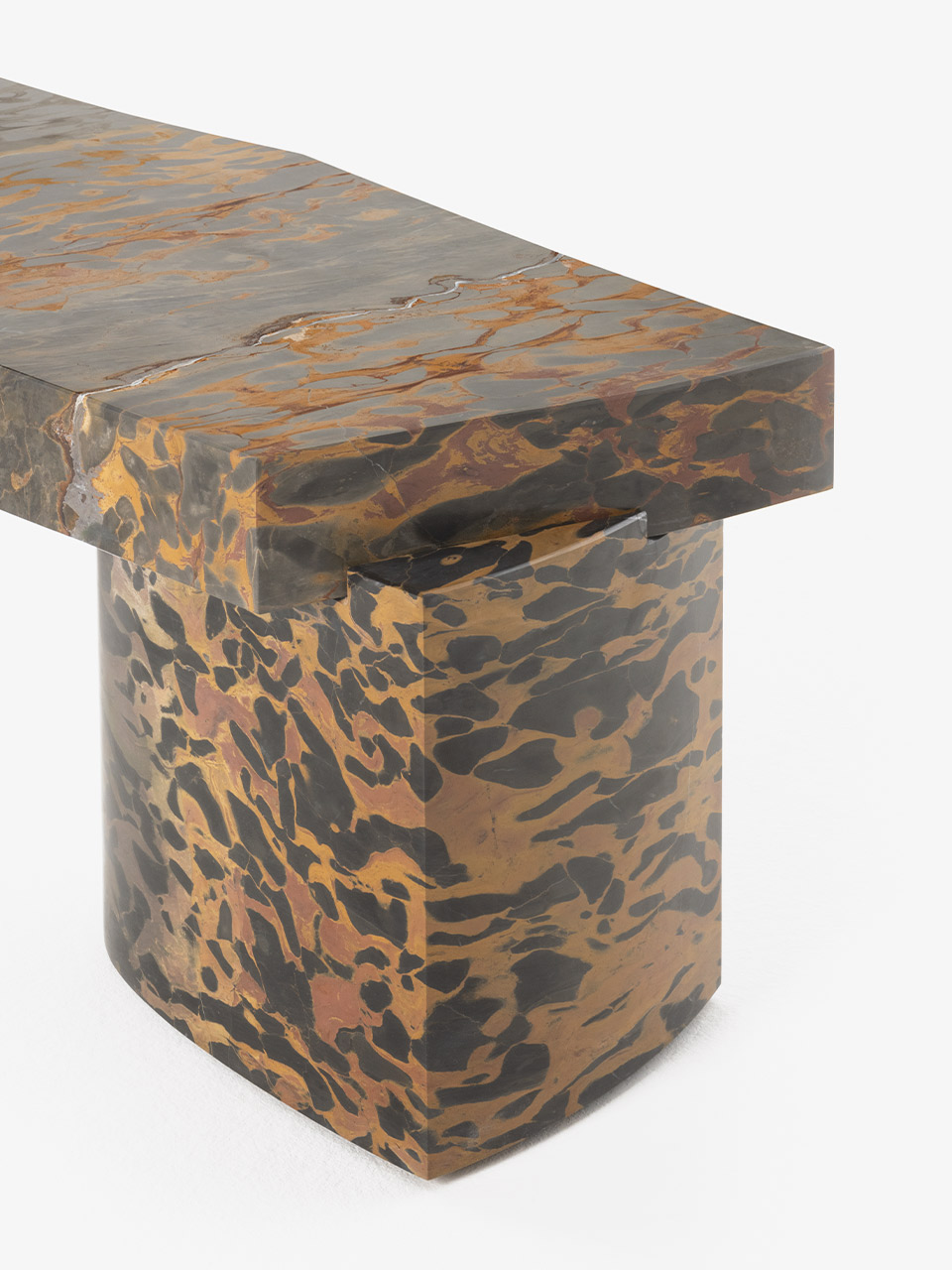
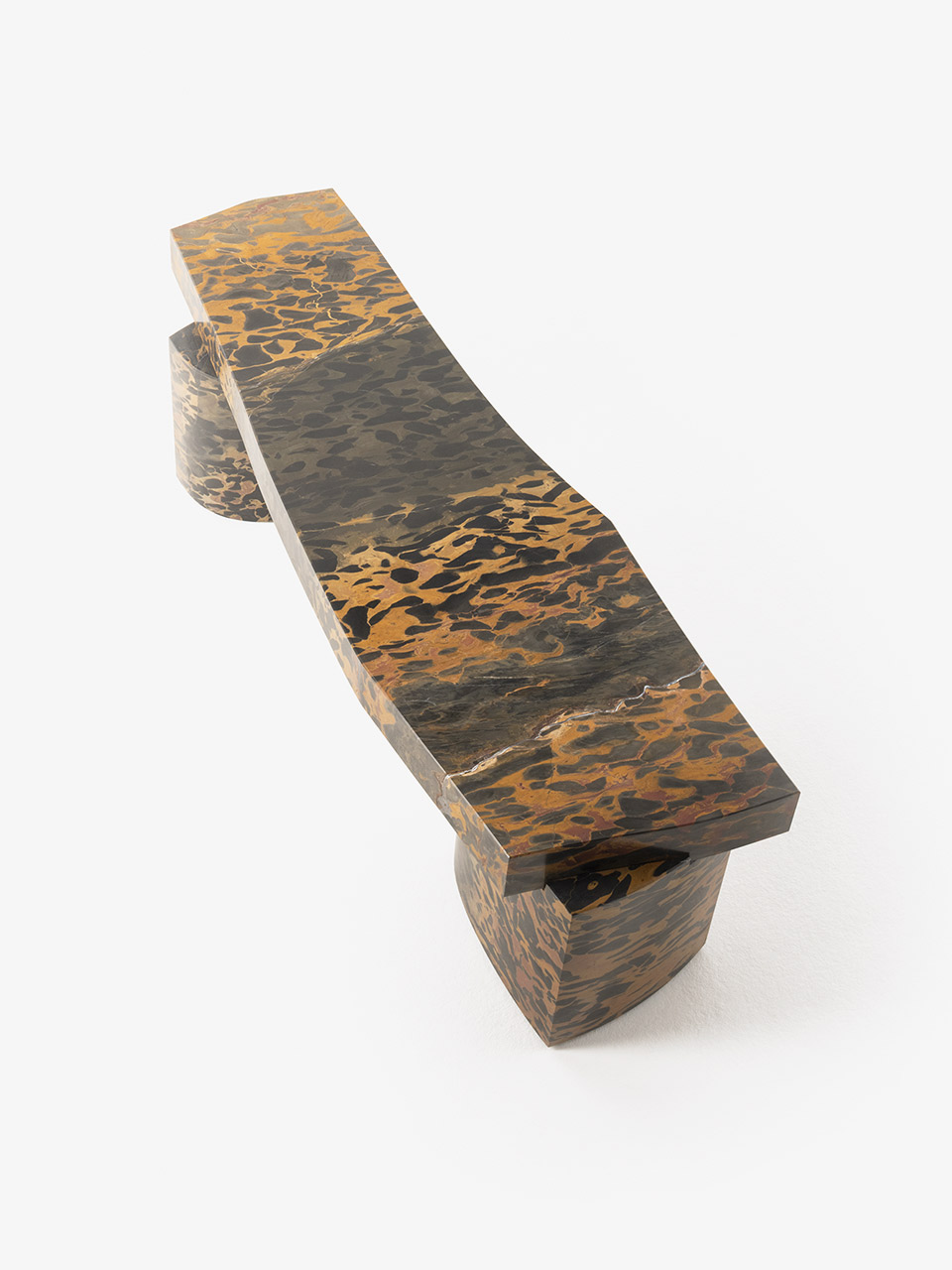
This process of revealing what is hidden within the stone lends the project its title, with AphanËs being an Ancient Greek word meaning that which does not appear, something hidden. In that sense, the design process becomes one of exposing the ënude natureí of the stone, with an emphasis on allowing what nature has formed over millions of years, to show.
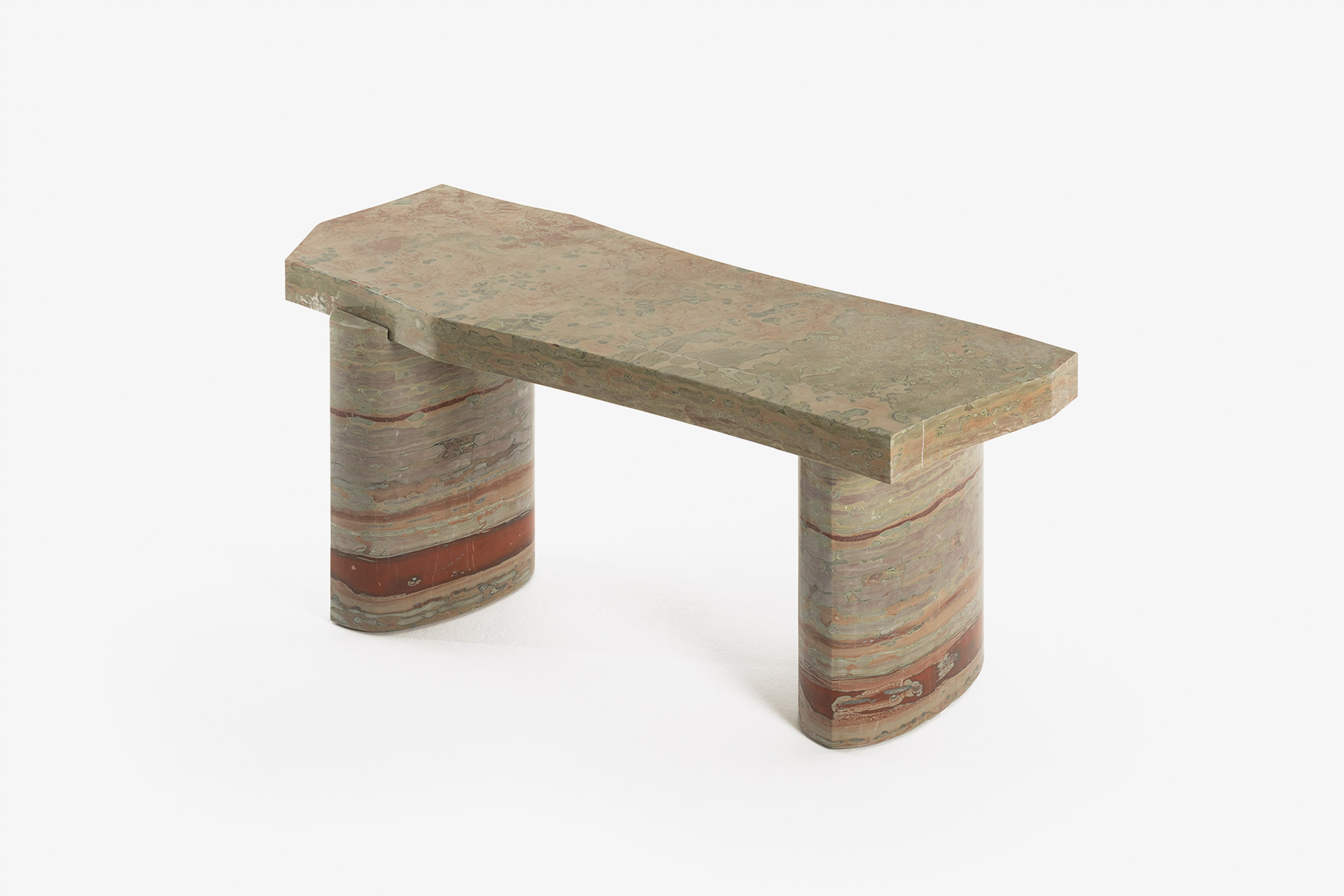
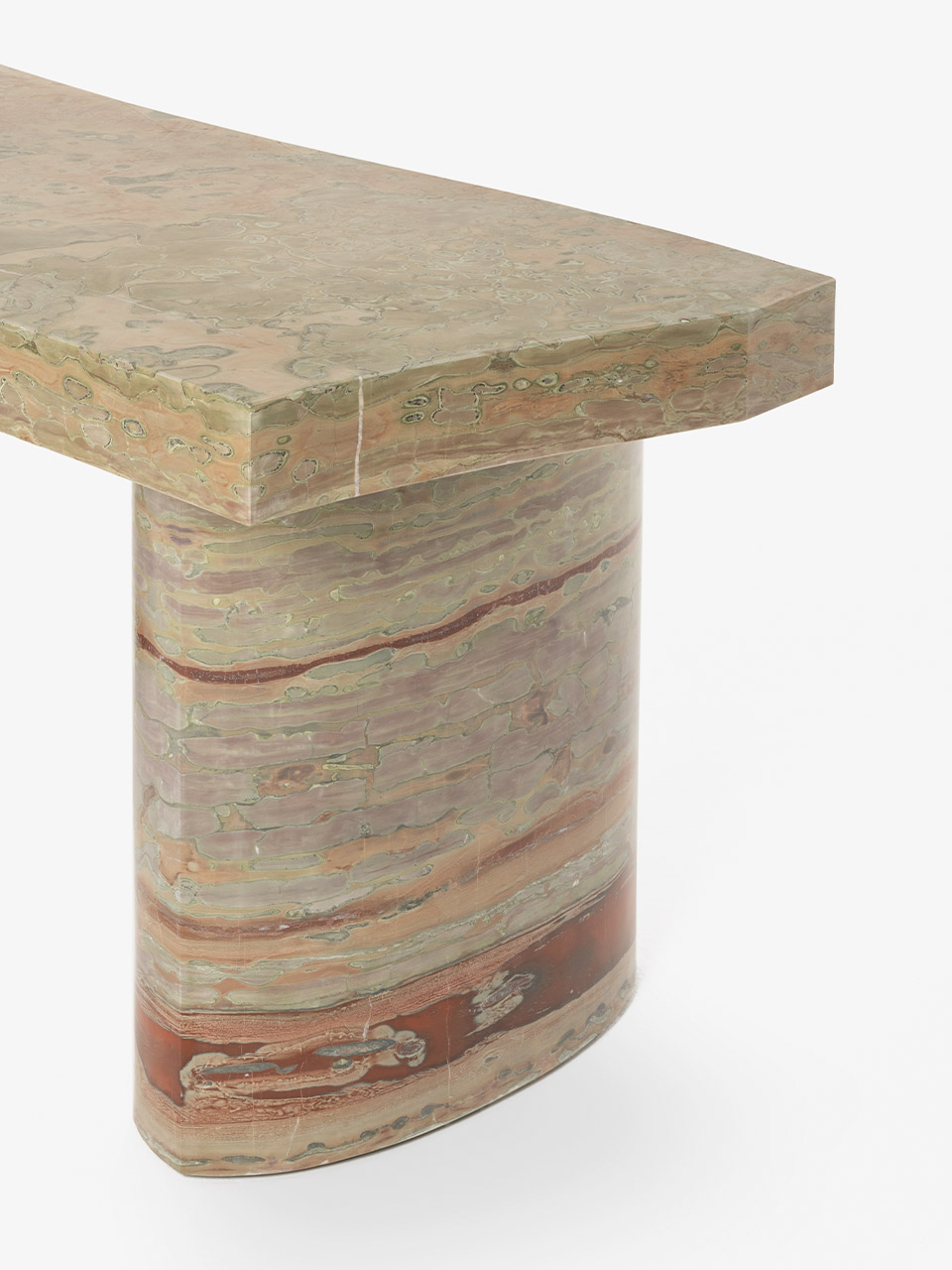
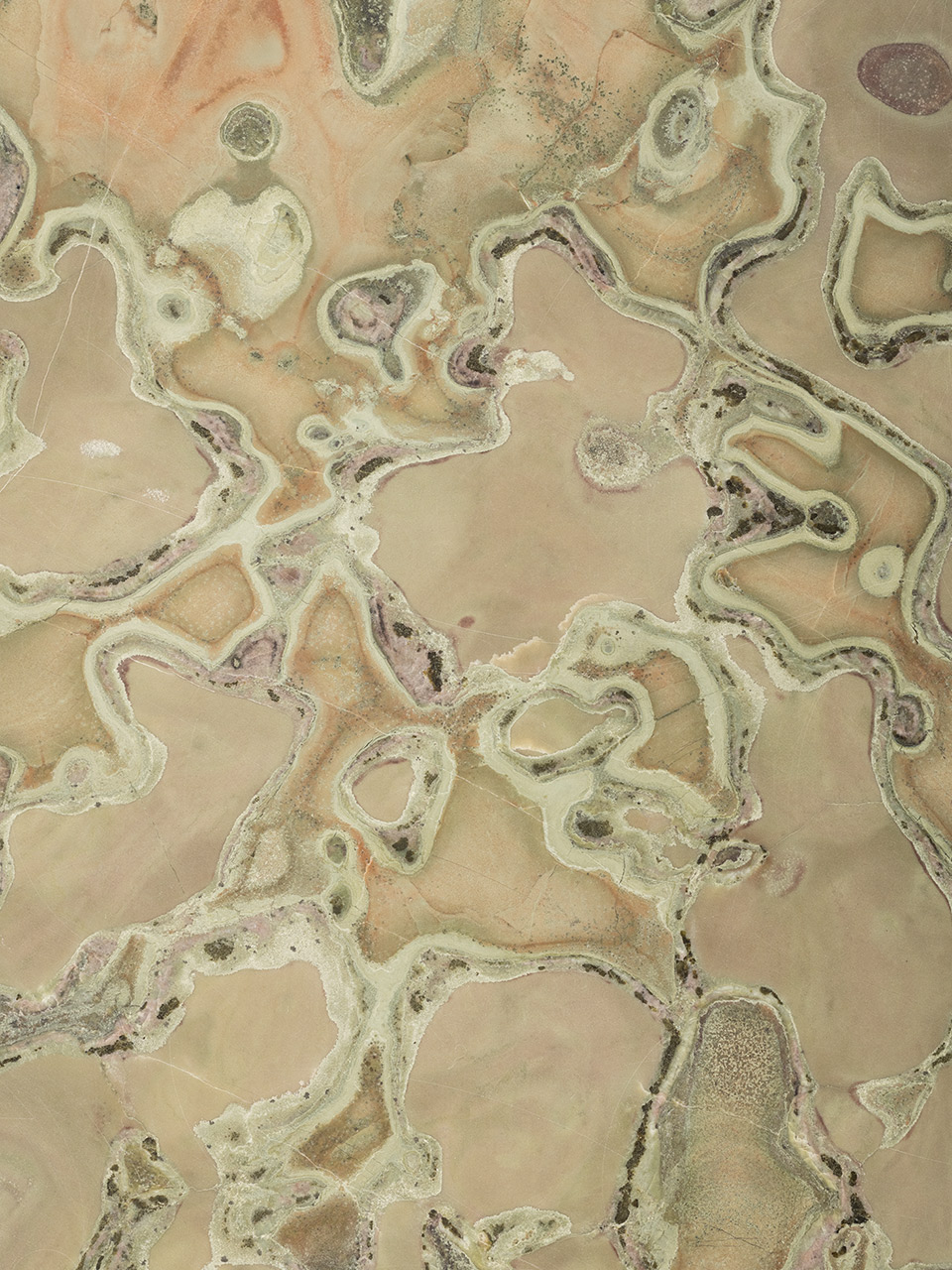
The result of more than two years of research and careful work with the available material, AphanËs respects the original formation process of these stones, with the understanding that their intricate patterns are a visual documentation of the history of the earth itself.
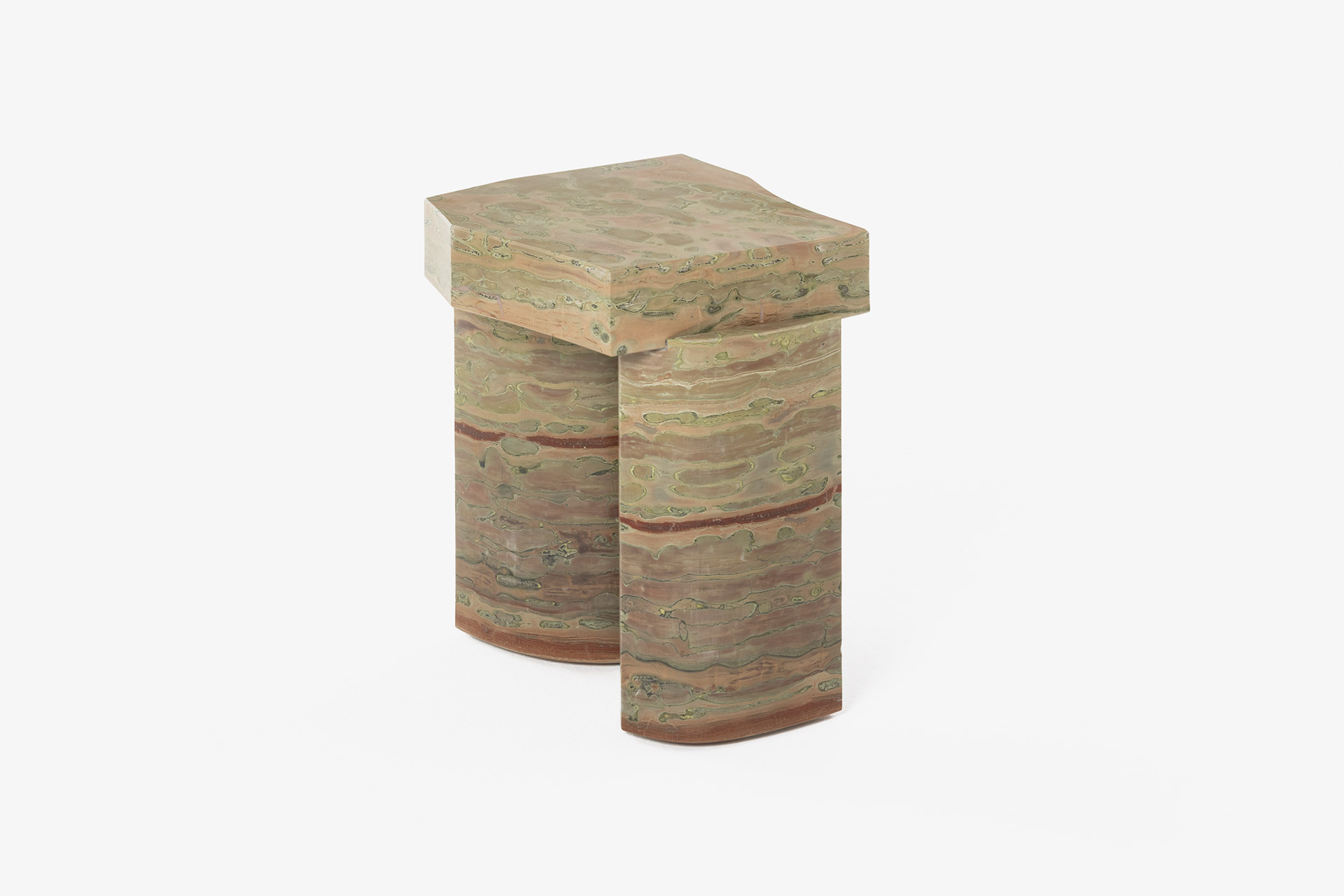
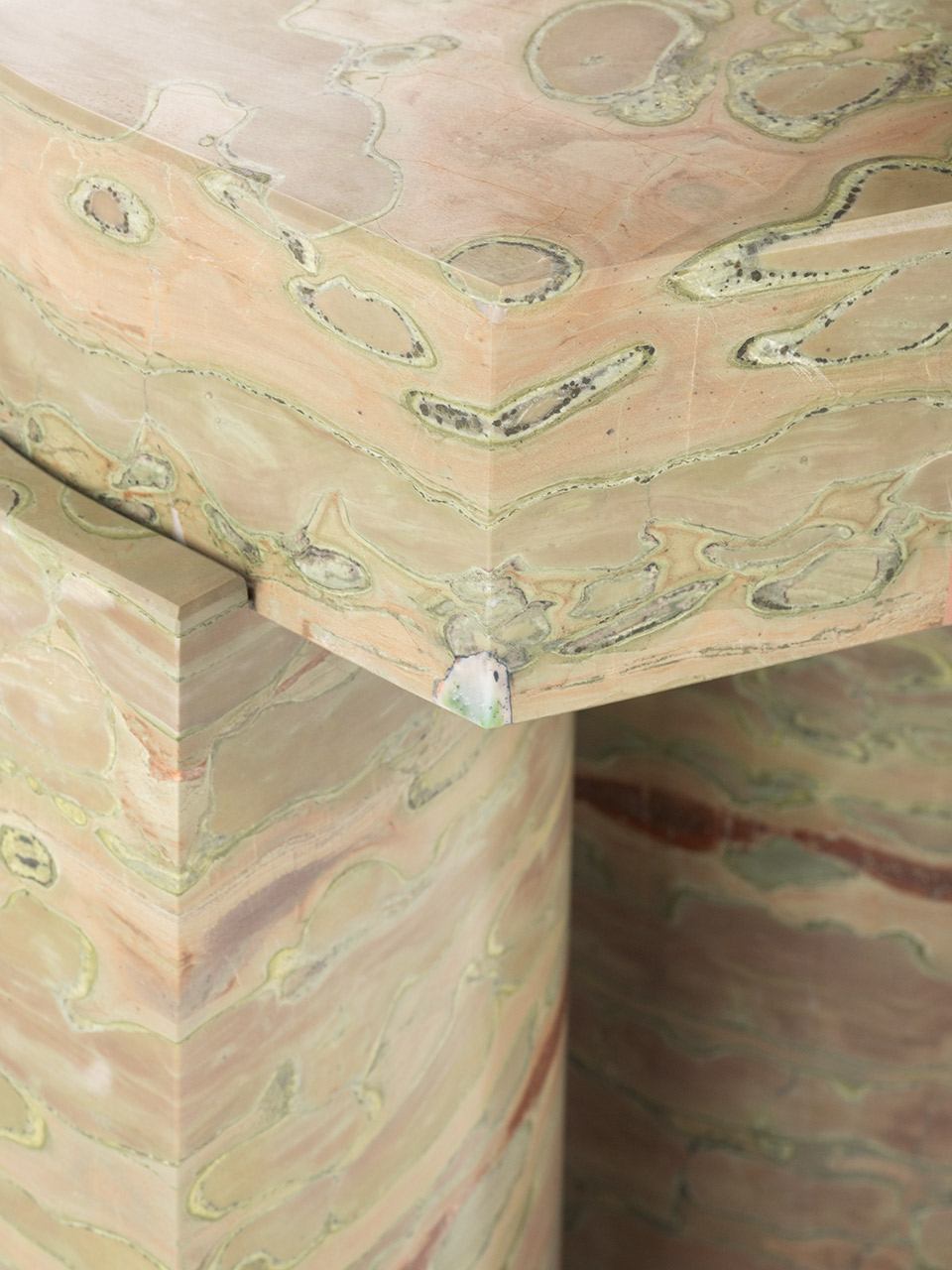
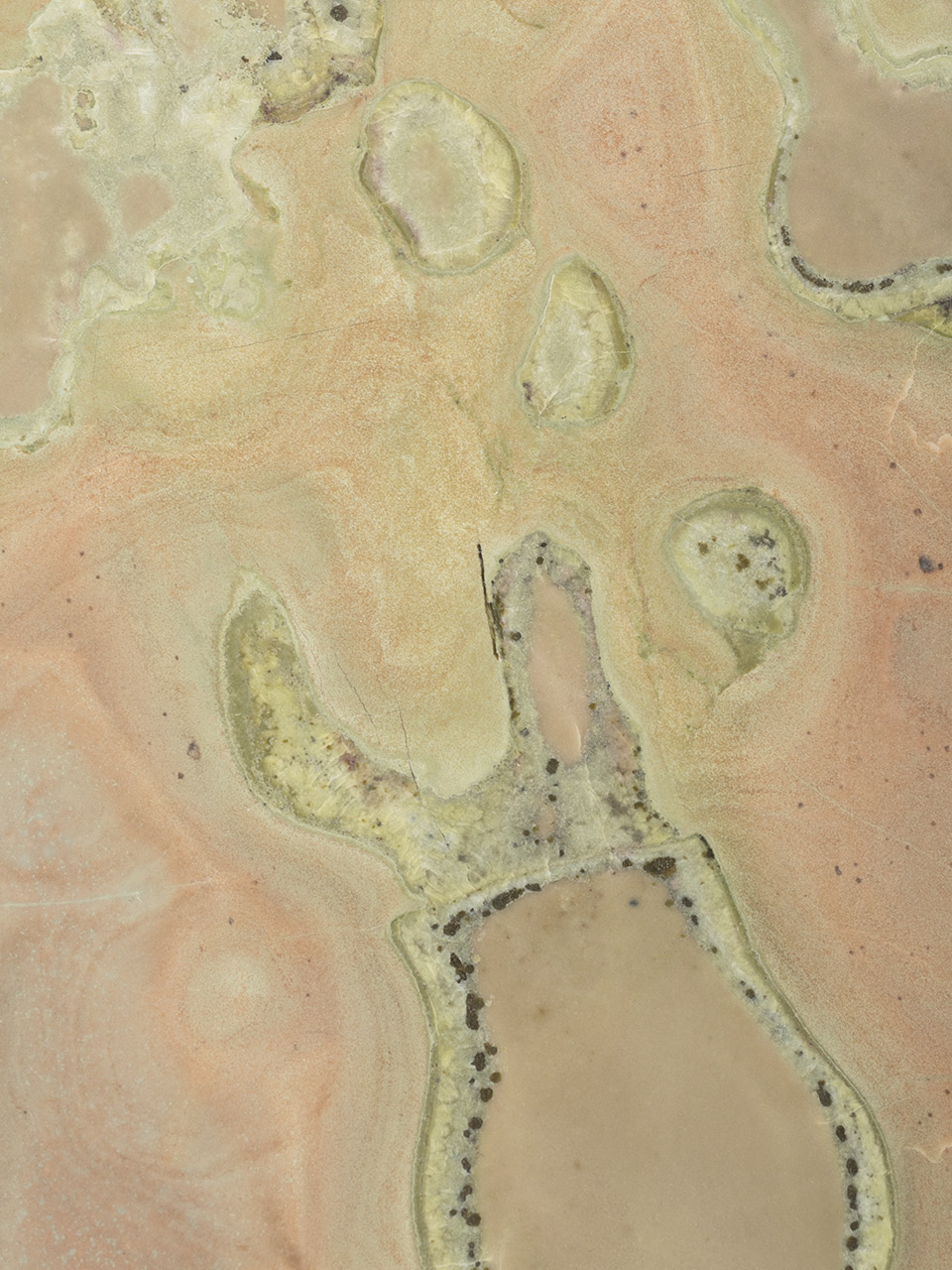
The collection is developed according to these principles, where the sculptures become megalithic micro-architectures in which the assembly is determined -now as in antiquity - by the available material assembled according to architectural archetypes.
In the body of works, the naturalness of matter is intertwined, mystifying itself, with human intentional gesture, in a process that reveals geological dimensions and moments to be contemplated in order to build a new relationship of awareness and reciprocity between human and nonhuman beings.
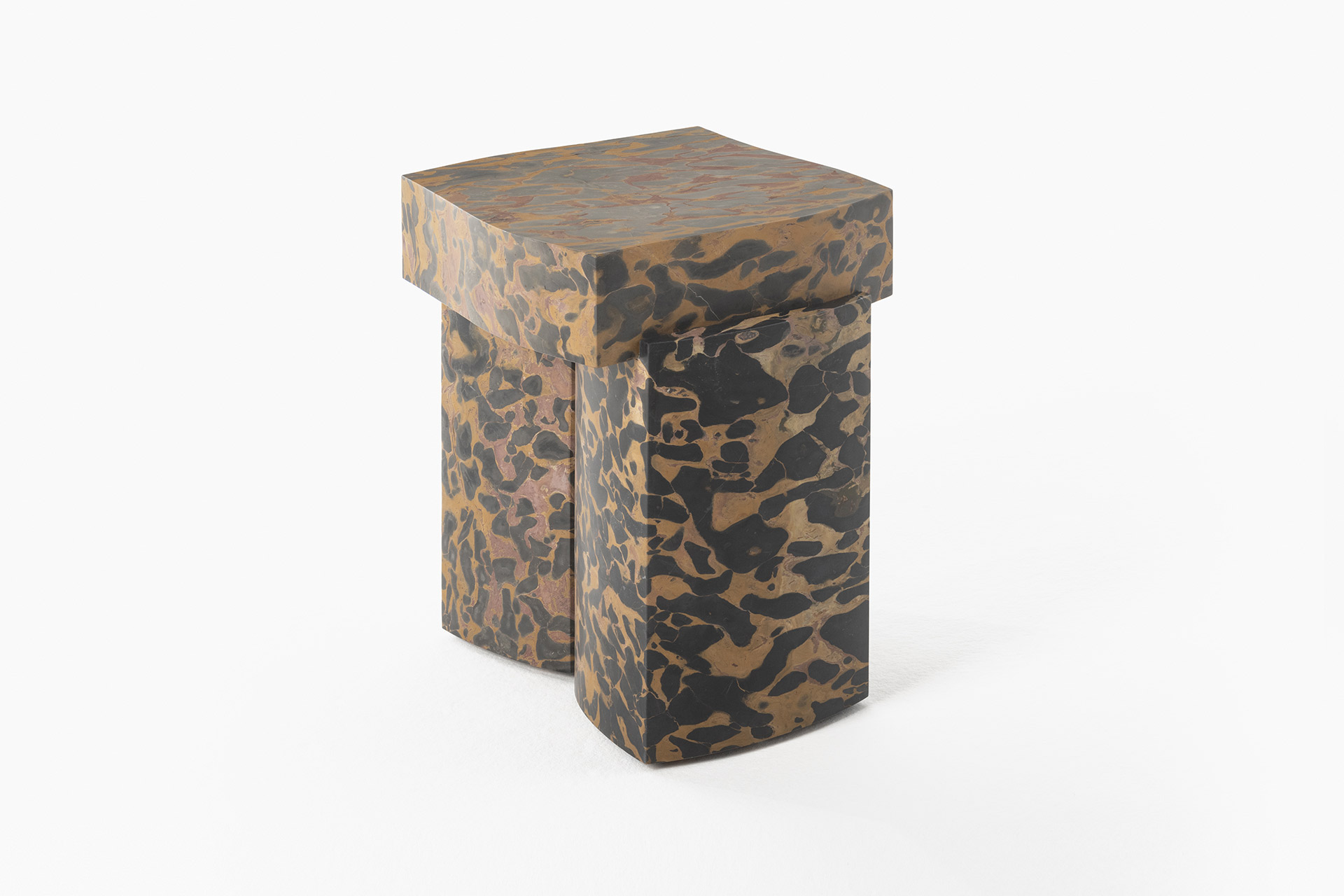
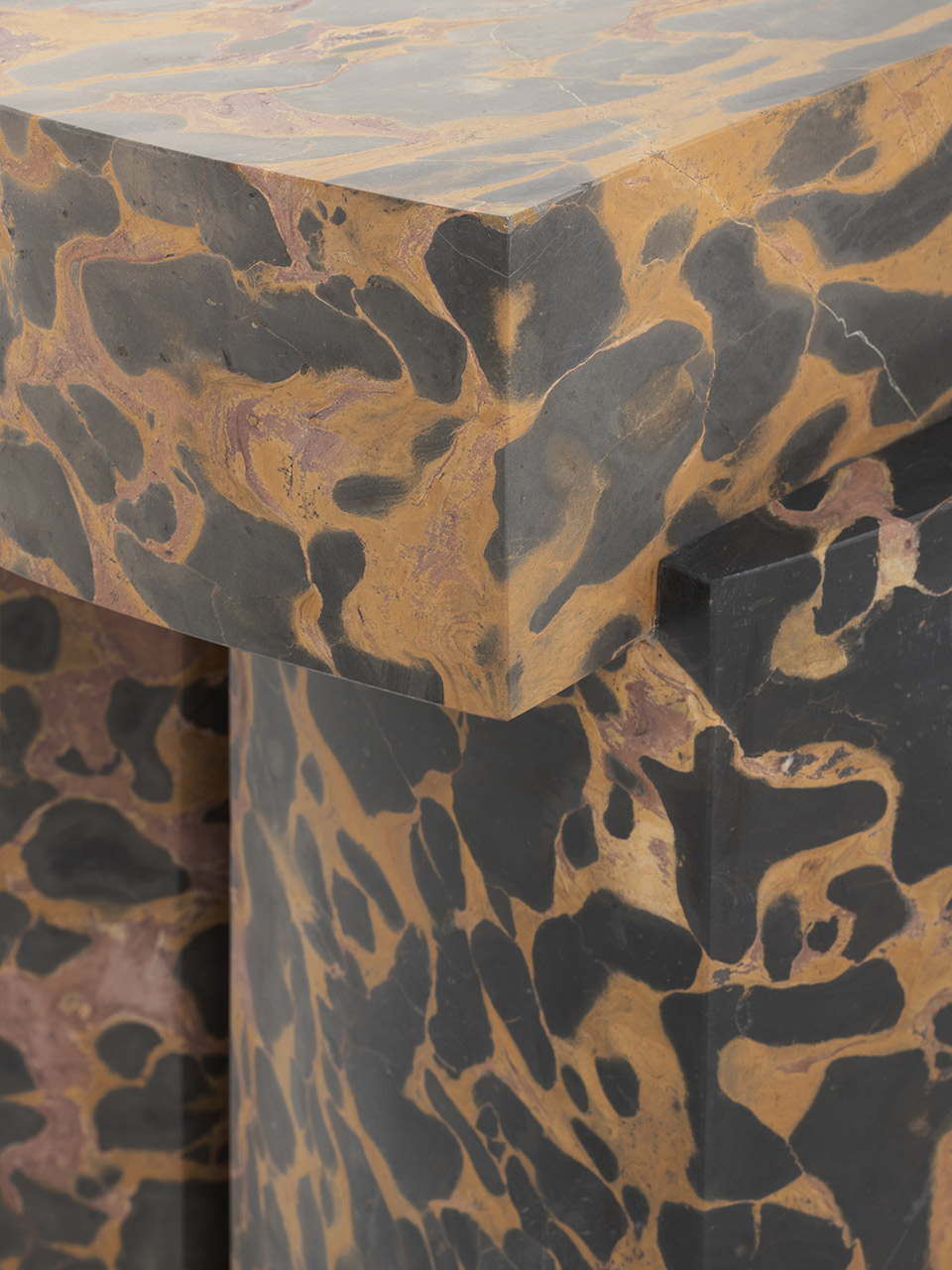
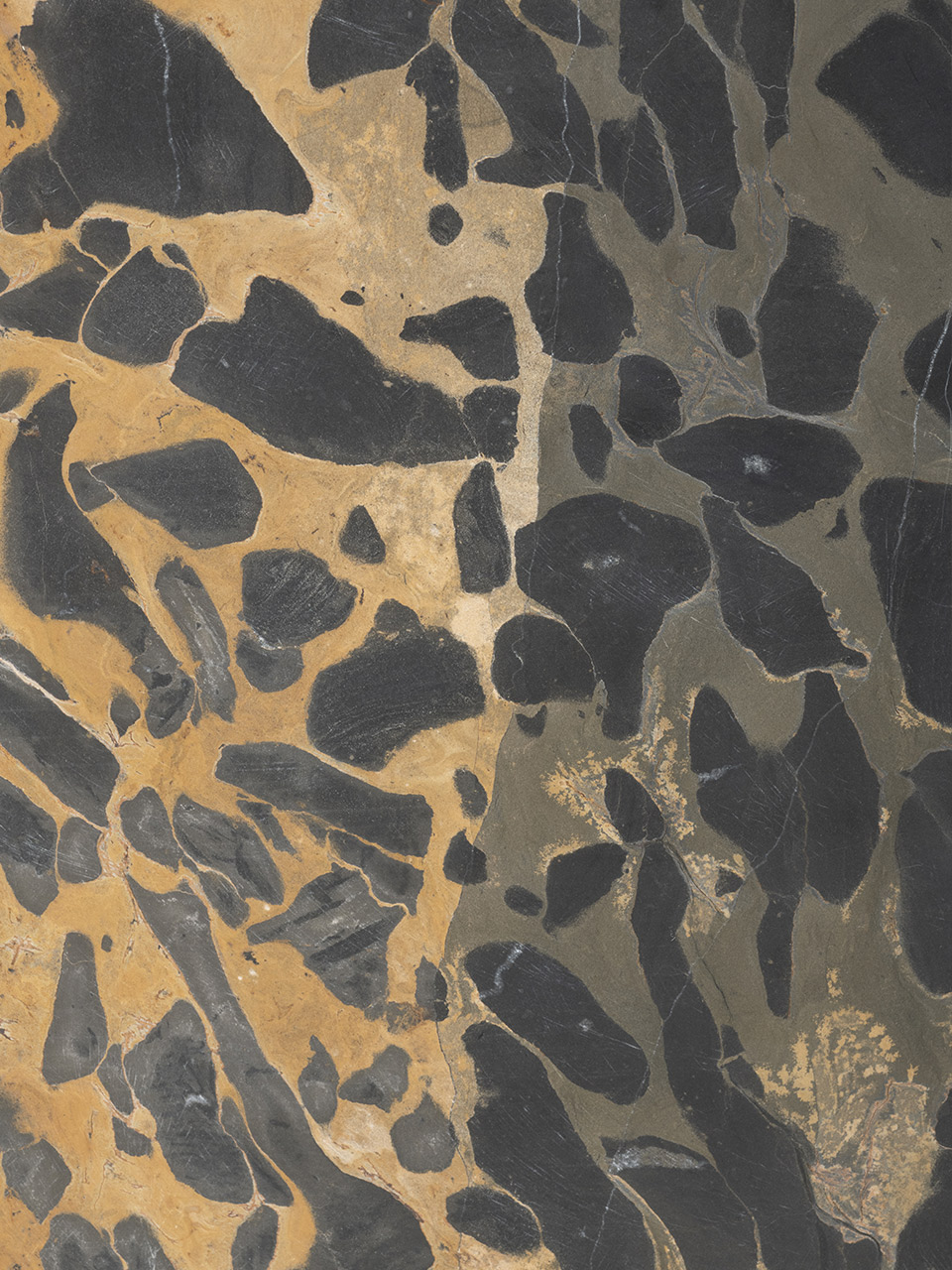
Chae Duporge, Okyang. Lee Ufan: Untouched Space. Editions Cercled’art, 2017
Tanizaki, Jun’ichiro. Libro d’ombra. Bompiani, 1962
Dotzenko, Grisha. Enku: Master Carver. Kodansha International LTD, 1976
Koren, Leonard. Wabi sabi, altri pensieri. Ponte delle grazie, 2015
MONO HA. Edizione Fondazione Mudima, 2015
R. Buckminster, Fuller.Isamu Noguchi: a Sculptor’s World.Steidl, 2015
Isozaki, Arata; B. Stewart, Davis; Mori, Toshiko; Kohs, Sabu. Japan-ness in Architecture. Mit pr, 2011
Fine, Ruth; Vander Weg, Kara. Michael Heizer: Altars. Gagosian / Rizzoli, 2016
Allemand, Evelyne-Dorothèe. Rodin, Brancusi, Carl Andre...: Le socle. Editions Invenit, 2017
Hart, Dakin. Isamu Noguchi: Archaic / Modern. D Giles Ltd, 2017.
Hart, Dakin. Museum of Stones: Ancient and Contemporary Art at the Noguchi Museum. D Giles Ltd, 2016.
Hart, Dakin; Bonet, Juan Manuel; Abrams, Matthew J. Bosco Sodi. Rizzoli Electa, 2020.
Laporte, Luc; Scarre, Christopher. The Megalithic Architectures of Europe. Oxbow Books Ltd, 2022.
Papapetros, Spyros. Pre/Architecture. Sternberg, 2021.
Puddu, Manuela; Doria, Federica; Giuliani, Stefano. Sardegna. Isola megalitica. Dai menhir ai nuraghi: storie di pietra nel cuore del Mediterraneo. Skira, 2021
J.,Cohen, Jeffrey. Stone: An Ecology of the Inhuman. University of Minnesota Pr, 2015